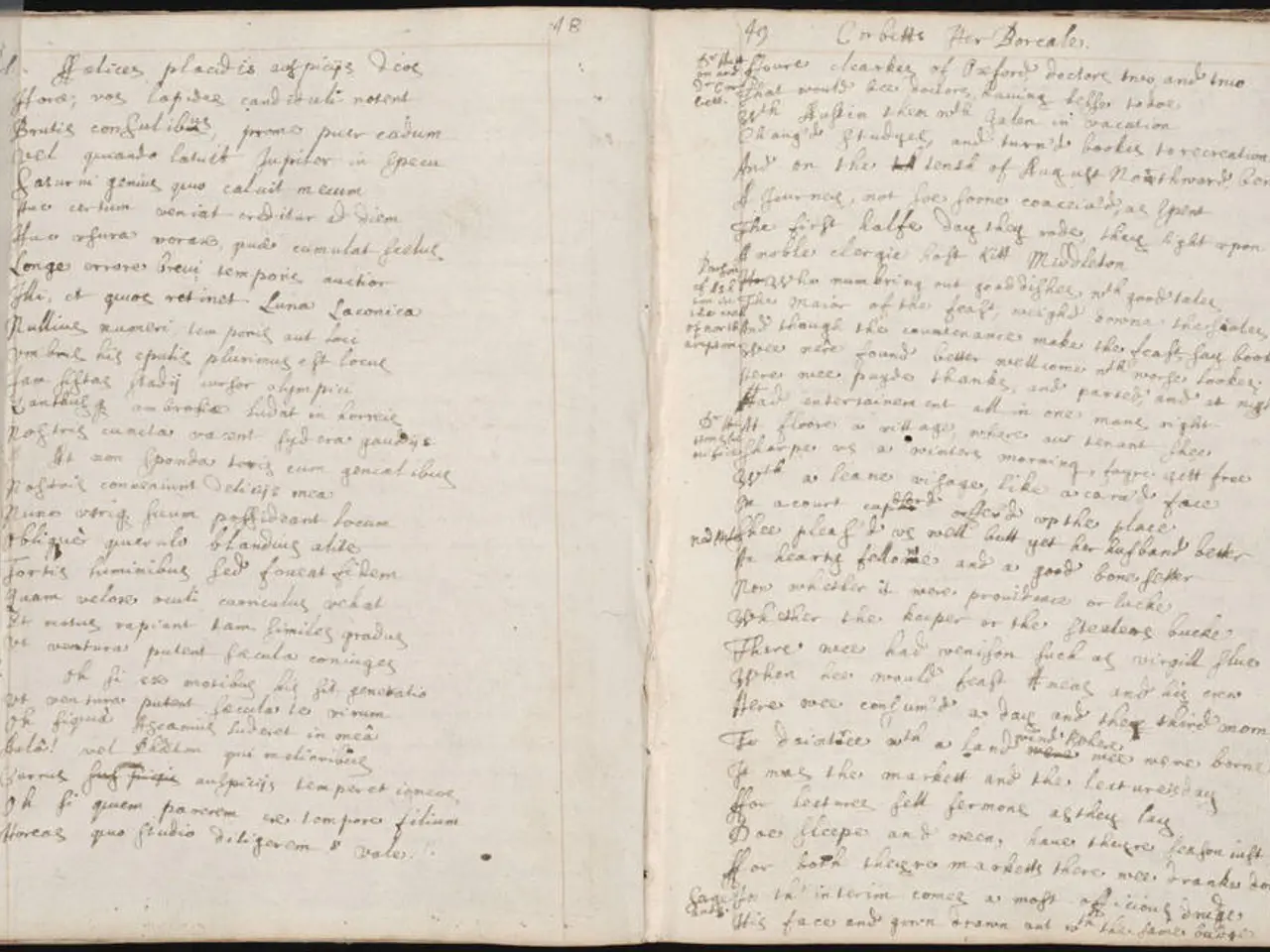Transforming Play Script into Screenplay: A Comprehensive, Detailed Walkthrough
Transforming a stage play into a screenplay isn't about making it bigger; every scene should count. Here's a comprehensive guide to adapting plays for the silver screen.
Preparation is key when adapting plays. A razor-sharp pitch package, including a logline, synopsis, polished script, and a ballpark budget or forecast, is essential. Remember, securing proper adaptation rights before rewriting or pitching is non-negotiable.
Stage plays rely heavily on dialogue, small casts, and single settings. Monologues or asides rarely translate well to screen, and stage exposition needs to become action. Adapting means planning and outlining the whole script upfront, structuring it for the screen to avoid endless rewrites and speed up every other step.
Every strong adaptation starts by boiling the play down to its fundamental story. A clear logline that clarifies the protagonist, central conflict, and stakes is crucial. Industry expectations matter in screenplay formatting; use short action lines, cap character names on first appearance, and remember one script page equals about one minute of screen time.
Screenplays demand active, visual storytelling. Every word has to count. Move exposition into subtext, give information through actions, objects, or reactions, and use short, purposeful lines. Writers with theatre backgrounds face challenges like letting go of favourite stage devices, adjusting pacing, cutting dialogue or scenes that don't push the story forward visually, and translating stage directions into cinematics.
The shift from plays to screenplays requires different skills due to the visual storytelling emphasis in film scripts. You can't just move your play scene-by-scene; film scripts thrive on movement and shifting perspective, breaking up long scenes, cross-cutting for pace, and letting behaviour and settings carry information.
Industry demands kill most scripts early; format and polish matter. Use a clear character objective, rising stakes, visual information, plot progression, and trim or combine techniques to test every scene. Build new scenes that demonstrate real consequences of early actions. Don't add expensive locations only for "cinematic value" if they don't drive theme or character.
Writers should rewrite with a new mentality, from playwright to screen architect, focusing on visual beats and planning for the screen. Use a professional feedback loop to cut months off your revision time.
Strong loglines help you stay true to your story and make development decisions with total clarity. Don't let subplots distract from your main arc; keep only those that reveal or test your protagonist's engine. Every scene in a script must pull its weight and avoid slow patches and wasted pages.
When you receive notes, weigh market priorities first. Document every adaptation decision. Use reversals and contradictions to deepen character arcs and build pressure. Film scripts emphasize dynamic scene changes, environment cues, and subtext shown, not said.
Smart worldbuilding can feel big, even on a budget; use visuals, not endless locations, to suggest scope. Common mistakes to avoid when converting play to screenplay include leaving in long stage monologues with no visual punch, expanding locations haphazardly without story payoff, submitting drafts without proper script formatting, skipping scene pressure-testing, and ignoring adaptation rights or unclear credits.
Secure adaptation rights up front, always. Every added scene in film adaptation should serve the main story and not just fill space. A successful adaptation isn't about expanding the world; it's about making every scene count.
Read also:
- Wawa avian tests positive for West Nile disease
- The market for Kraft Lignin is projected to increase at a rate of 7.2% each year until 2034.
- Revising hair care practices with cynorrhodon extracts for addressing hair fragility
- Filipino Card Games Find Their Home at Gamezone, Offering an Unmatched Experience!





